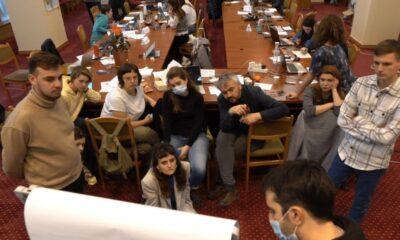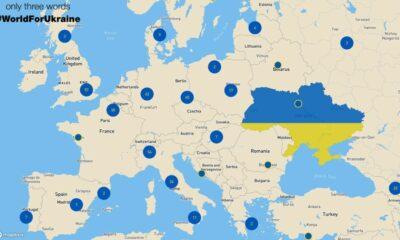Economy
Currency crisis wider and deeper than Euro-zone
Reading Time: 4 minutesFinancial markets remain jittery and the euro has continued to decline despite a $1 trillion aid package, put together by the European Union and the International Monetary Fund, to stabilize the currency. It was a crisis that began in Greece, but now threatens other countries that use the euro and beyond. And, many wonder whether Europe can dig out and at what cost.
By Sonja Pace
Financial markets remain jittery and the euro has continued to decline despite a $1 trillion aid package, put together by the European Union and the International Monetary Fund, to stabilize the currency. It was a crisis that began in Greece, but now threatens other countries that use the euro and beyond. And, many wonder whether Europe can dig out and at what cost.
The euro had been a success story since it first came into use about 10 years ago. It defied the critics who said it would never work as the single currency of even part of the European Union. Used by part of the European Union – known as the Euro-zone – it was stable, rose in value, and became the de-facto second currency of choice behind the U.S. dollar.
But in recent months things began to unravel, and it all started in Greece. The immediate reason was simple and some two decades in the making, says economist Spyros Economides of the London School of Economics.
"The Greek government, the state and inevitably the Greek people have been spending more money than they have been earning. So, at some point the debts got to a stage that the Greek government could no longer afford to repay interest and capital on loans that were made on international money markets to fund the phenomenal growth in credit, which had been the hallmark of the Greek economy for the last few decades," he said.
Economides says the global economic crisis also played a role. "It is a combination of an accumulated debt over an extremely long period of time, combined with the global financial crisis which has made the market place extremely jittery about having loans, which may be bad, towards states that are heavily in debt," he said.
And with Greece at a point of not being able to repay debts coming due, it turned to other European countries for help. The European Union and the International Monetary Fund provided a $140-billion bail-out package for Greece to draw on. Billions more have been put in place to try to stabilize the euro.
Greece is not the only Euro-zone country with a massive debt, says political analyst Christian Schweiger of Durham University in northeastern England. "If you look at Italy, where the annual borrowing is not as excessive as in Greece, but the total level of public debt it is almost 100 percent sometimes above 100 percent [of annual GDP]. It simply shows that there is no budget discipline," he said.
Other countries singled out for fiscal excesses and massive debts are Spain and Portugal.
Greece has announced severe austerity measures and Spain and Portugal have followed suit.
"The key is to pre-empt a swift decline by taking necessary measures which will be easier to do now than to do at the very last minute as happened with Greece when they have to be far, far more severe and could lead to the kind of social unrest which we have seen in Greece," said Economist Spyros Economides.
Economides says he believes that Spain and Portugal are better placed than Greece to begin paying back their debt.
But austerity measures are needed and that means cutting back on social programs says Christian Schweiger.
"If we have a budget crisis in individual countries then obviously they will be asked to cut back. If you look at the European Union as a whole and not just the Euro-zone – there is certainly a tendency to ask countries to limit public spending," he said.
That will not be popular and Schweiger says it could lead to an erosion of public support for the European Union, especially in countries with high welfare spending.
European countries pride themselves in their generous social safety net – from unemployment benefits and pensions to health and education. Will that have to be scaled back to the point of being lost? Spyros Economides, thinks not.
"The European Union member states have a lot of things in common one of them being that their economic and social model does provide for those less well off in society, for whatever reason, there is a safety net in place," he said.
But, many economists, including Economides, say there is a fundamental flaw in the Euro-zone that hampers long-term sustainability of the currency.
"That is the fact that there is no European government, there is no interventionary authority that can provide the fiscal background to this particular monetary organization. This crisis has made patently clear is that the interventionary powers of Brussels are limited," he said.
And, that is not likely to change, says Christian Schweiger.
"It is something the European Commission tries to do. They for a number of years have been trying to advocate the coordination of economic policy making. Although the aspiration is there, I do not think it will happen to a large extent," he said.
In or out of the Euro-zone, E.U. countries are loathe to give up any more power to headquarters in Brussels. But, Schweiger does not think this spells the death knell for the euro – because he says there are political as well as economic aspirations behind the monetary union.
Spyros Economides believes the immediate crisis may have been remedied, but there is a warning. "I think this is such a big crisis that it is going to be coming back to haunt us for the foreseeable future," he said.
He says that is because of the structural flaws in the Euro-zone. And another warning from many economists – damage to the euro also hurts countries outside the Euro-zone that trade heavily with it, and in today’s globalized economy, many stand to lose.
Economy
Moldova will receive a disbursement of 36 million euros as part of the the Economic Recovery Plan
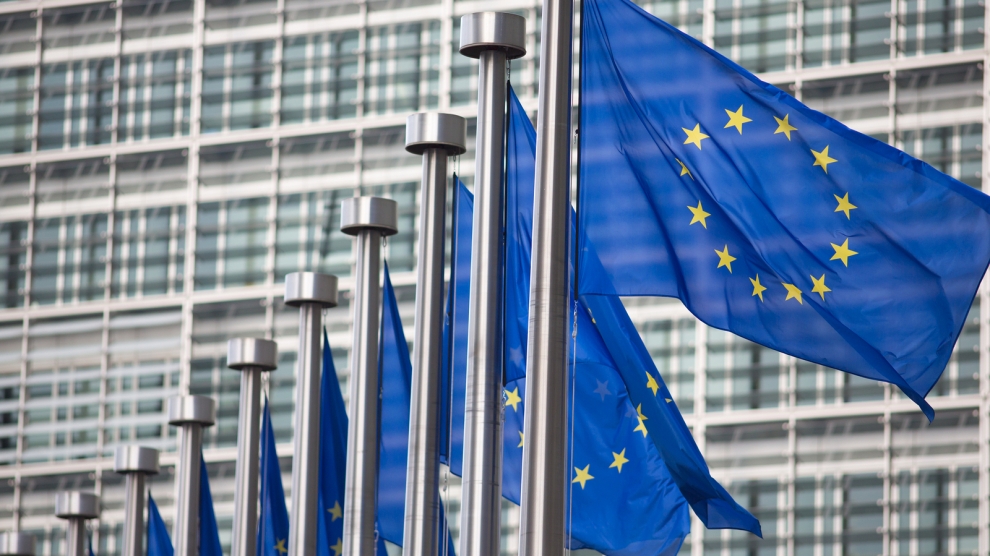
This week, the European Commission approved the disbursement of 36 million euros in grant money for the Republic of Moldova. The announcement was made by Deputy Director-General for Neighbourhood Policy and Enlargement Negotiations at the European Commission, Katarina Mathernova, who paid an official visit to the Republic of Moldova between September 13-15, together with Managing Director for Russia, Eastern Partnership, Central Asia, Regional cooperation and OSCE, at the European External Action Service, Michael Siebert.
The EU officials had meetings with President Maia Sandu, Minister of Foreign Affairs and European Integration, Nicu Popescu, Speaker of Parliament, Igor Grosu, Prime Minister of the country, Natalia Gavrilita, as well as key representatives of Government, international financial institutions and the civil society, according to a press release issued by the Delegation of the European Union to the Republic of Moldova.
Beside such topics as the EU-Moldova relations and prospects, the priorities of the reform agenda of the new Moldovan Government, preparations for the Eastern Partnership Summit at the end of the year and the Transnistrian conflict settlement, the officials also discussed the EU assistance in support of reforms and the Economic Recovery Plan for Moldova, which was announced in June with a total EU support of 600 million euros over the next 3 years.
“The first measures under the Economic Recovery Plan will shortly materialize, with the expected disbursement of 36 million euros in grant money under budget support programmes to support the authorities’ efforts to fight against the consequences of the pandemic. Moldova can count on EU’s assistance on its path to reforms and to recovery, bringing tangible results to citizens,” Katarina Mathernova stated.
The plan is based on assistance provided by the European Union through various bilateral and regional instruments, aiming to mobilize the funds in the form of grants, loans, guarantees and macro-financial assistance.
“The Economic Recovery Plan for the Republic of Moldova involves much more, not just this financial support provided immediately. It must help digital transformation, strengthen infrastructure, energy efficiency, education and support small and medium-sized enterprises,” the EU official also said.
As Prime Minister Natalia Gavrilita informed, “The Economic Recovery Plan and the 5 flagship initiatives for Moldova in the Eastern Partnership will directly contribute to the reform and consolidation of institutions, stimulate long-term socio-economic development, bring direct benefits to citizens, and unleash new economic opportunities through promoting the green agenda and digitization. Small and medium-sized enterprises (SMEs) have been hit hard by the crisis. Promoting and diversifying access to finance and reducing collateral requirements will be essential in supporting economic operators. We are grateful to the EU partners who will launch two programs to support 50 000 independent Moldovan SMEs to adapt to the new conditions.”
President of the Republic of Moldova, Maia Sandu, welcomed the decision of the European Union to disburse about 745 million lei in grant money, as the official page of the President’s Office announced. “EU support comes after a long period of freezing of European assistance, caused by former governments. We managed to relaunch the political dialogue with the European Union and resume financial assistance. The Republic of Moldova is gradually regaining the trust of its strategic partners. This European support is also a signal of encouragement for the new Government team in its commitment to clean up the institutions, fight corruption and launch development programs in the country,” said Maia Sandu.
Photo: unknown
Economy
Romania and Moldova signed a partnership memorandum pledging to cooperate in promoting their wines
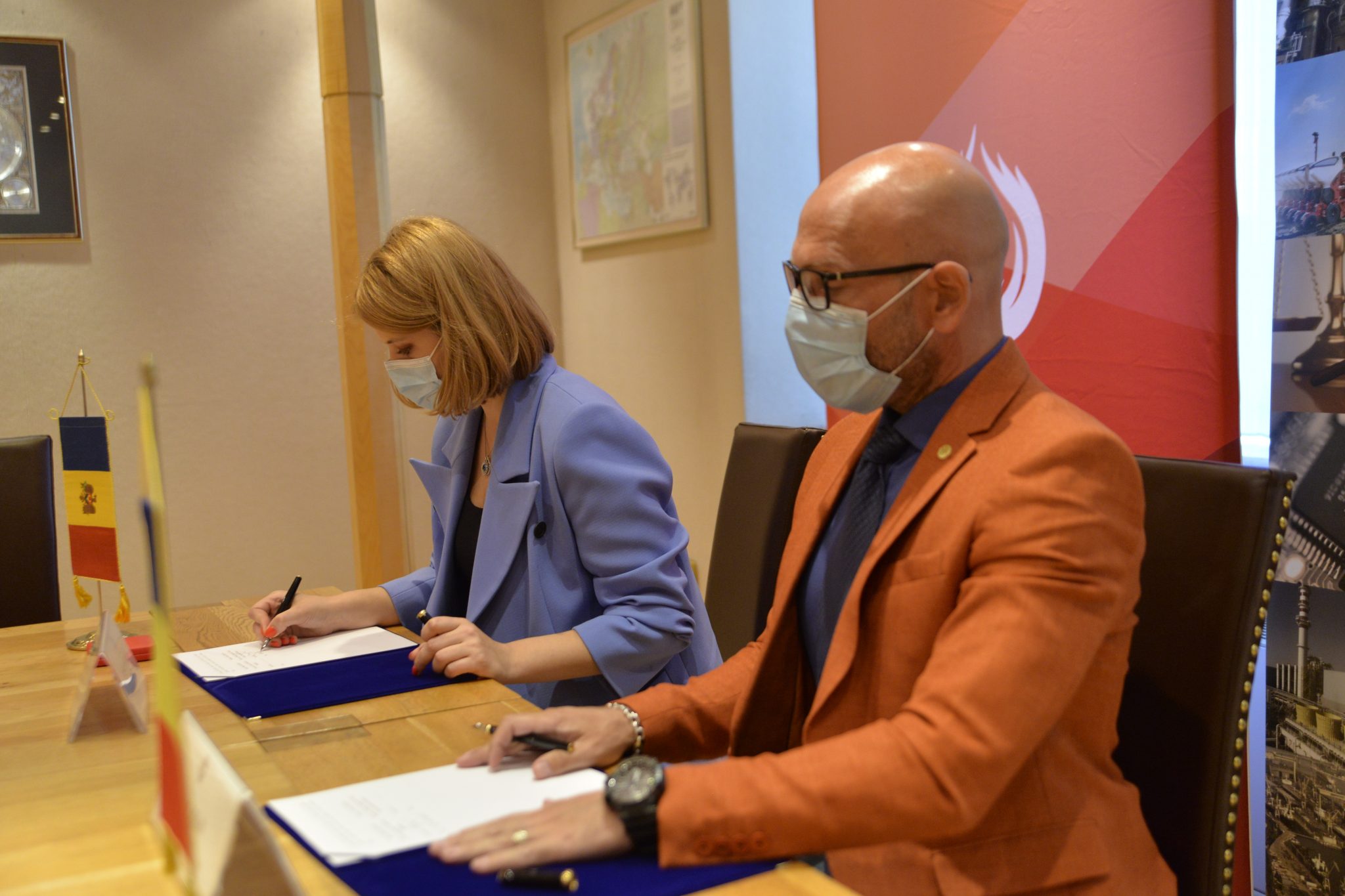
The Chamber of Commerce and Industry of Romania (CCIR) and the National Office for Vine and Wine (NOVW) of the Republic of Moldova signed, last week, a memorandum of cooperation on organizing joint promotional activities in the markets of common interest, as the CCIR announced.
China, Japan or the USA are just some of the markets targeted by the Romanian and Moldovan institutions. The memorandum also involves advertising activities for wines from common indigenous varieties, promoting the oeno-tourist region, developing a tourist route in the two states, exchange of experience, study visits, and mutual support in identifying new export opportunities. “We are very confident that this collaboration between our organizations will lead to sustainable economic growth and a higher degree of well-being among Moldovans and Romanians,” claimed Deputy Secretary-General of CCIR, Bogdan Visan.
On the other hand, Director of the NOVW, Cristina Frolov, declared that no open competition with Romania is aimed at the governmental level of the Republic of Moldova. “This request for collaboration is a consequence of the partnership principle. Romania imports 10-12% of the wine it consumes, and we want to take more from this import quota. Every year, the Romanian market grows by approximately 2.8%, as it happened in 2020, and we are interested in taking a maximum share of this percentage of imported wines without entering into direct competition with the Romanian producer,” the Moldovan official said. She also mentioned that Moldova aims at increasing the market share of wine production by at least 50% compared to 2020, and the number of producers present on the Romanian market – by at least 40%.
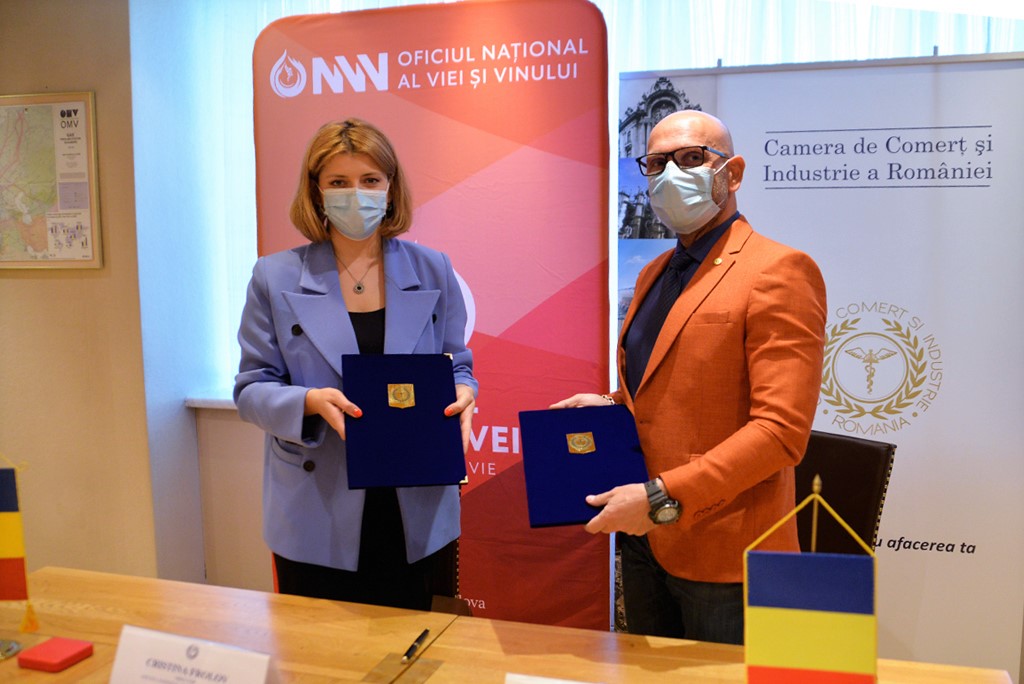
Source: ccir.ro
**
According to the data of the Romanian National Trade Register Office, the total value of Romania-Moldova trade was 1.7 billion euros at the end of last year and over 805 million euros at the end of May 2021. In July 2021, there were 6 522 companies from the Republic of Moldova in Romania, with a total capital value of 45.9 million euros.
The data of Moldova’s National Office of Vine and Wine showed that, in the first 7 months of 2021, the total quantity of bottled wine was about 27 million litres (registering an increase of 10% as compared to the same period last year), with a value of more than one billion lei, which is 32% more than the same period last year. Moldovan wines were awarded 956 medals at 32 international competitions in 2020.
Photo: ccir.ro
Economy
Moldova’s hope to be a top walnut exporter and its main difficulties

The Republic of Moldova has perfect weather conditions for growing walnut trees, that creating a great potential of walnut production and trade, especially on international markets, where the demand is way higher than the product’s supply. National and international experts believe that the country’s walnut production industry is on the verge of important transformations, which could lead to increased yields, quality and competitiveness worldwide.
According to authorities, Moldova exports 34-35 thousand tons of walnuts in shell, which is about 7% of the total export of fruit and 5% of the total export of horticultural products. The export value is assessed as being $120 million, that being 57-60% of the total fruit export value and about 50% of horticultural export value. Most of walnut crops are exported to the EU countries, such as France, Germany, the Netherlands, Romania and Austria. The country’s exports were among the world’s top 10 when it comes to the highest dollar value of the product during 2020.
Viorel Gherciu, Minister of Agriculture and Food Industry, pointed out that the production in the domestic walnut industry has increased by 55% in the last five years, which ranks Moldova among the main producers in the world.
“The biggest opportunity for this industry is that we are in the geographical proximity of the largest walnut import area in the world, which is the European Union, with almost 40% of total imports in the world. We are on the EU border, with privileged relations, with an Association Agreement. We already enjoy a good relationship in working with European importers, they trust our processors. A very close collaboration has been created and this is, in fact, the guarantee for those who invest in the area,” claimed the president of the Walnut Producers Association, Oleg Tirsina.
The data provided by the National Bureau of Statistics show that there are 34.7 thousand hectares of walnut plantations in the country. 20.90 hectares are represented by orchards. 75% of planted orchards are formed of old varieties trees. 30-35% of the exported production comes from orchards, the rest comes from individual farmers and plantations along the roads. This means that the quality of walnut production is not at its maximum potential. Developing commercial plantations through orchards modernization and extension of walnut varieties would provide double yield and better quality, experts say.
Governmental support in the form of subsidizing solutions, foreign investments and credit options are indispensable for the industry development. One of the financing options is the credit line of the European Investment Bank Project. Since 2016, 15 producers and processors of nuts, almonds and hazelnuts have benefited from these loans with the total amount of investments worth 8.7 million euros. A further extension of the project would provide another 60 million euros for the modernization of the horticultural sector in general and for harvesting organic walnuts in particular.
Photo: heymoldova.com


